Every year round club across the world has a brand new season that is about to begin. This season undoubtedly will start off very differently than ones in recent memory. Graduation & retirement will take familiar faces off the pool deck. Olympic excitement will draw new athletes to the facility. Swimmers will have to fill new team roles and coaches will have to get used to new team dynamics.
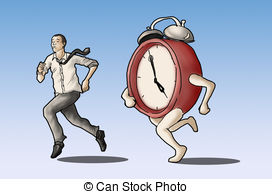
With all of this change there is one thing that remains constant. Time. Time is the resource that everyone has the same amount of. It doesn’t matter if you just coached the best swim team in the world, or are stepping on deck as coach for the first time. What you do with your athlete’s time determines their success. It is imperative that you don’t waste it.
What is the best way to make sure that you are using time wisely? Plan (Big insight there!) Not just any plan however. Reverse plan. Plan with the end in mind. Some call it reverse engineering. Whatever you want to call it, you start with what you ultimately want at the end of the season and work backwards from there.
I have used this planning technique to help guide my high school swim team to 4 straight top 3 state finishes (1 state championship). Planning with the end in mind has also helped my swimmers decrease their average 100 times by 15 seconds.
The reverse engineering technique has also been successful outside of the pool. It helped turnaround the underperforming high school that I worked at from a D to an A rating in 3 years. My new business man crush Gary Vaynerchuk swears by the method when trying to understand business deals and company relationships. He thinks, what do my business associates ultimately want, and how can I help get them there? Insert the word “athletes” for business associates and you basically have a coach.
Whether it be planning for a school year, swim season or board room presentation, planning with the end in mind works.
I’m going to walk you through how I began planning for my swim group’s 2016 short course season.
Season Planning Steps
1st. The End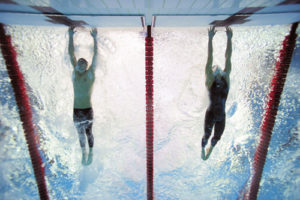
I ask myself, how do I want my athletes to perform at their last meet of the year? Answer: Well! – moving on Of course I want the athletes to perform well . . . We need to go deeper.
What does performing well mean? What does it look like? What does the athlete feel? What actions will the athlete take on meet day to perform well?
2 questions that I come back while planning are: What would that look like? What actions did the athlete take to get there?
I brainstormed a few things that are important for me and my group. Allow me to share:
Athletes should feel confident behind the blocks
- Looks like: standing tall/smiling/ focused on race
- Actions taken: proper nutrition, thought/psychological practice, trained race plan
Know what they have to do to get their goal time (splits)
- Looks like: can hit desired 25, 50 and 100 splits
- Actions taken: Training at race pace throughout the year, keeping goal times in mind while training. Hitting goals times in training
Have strong finish in race
- Looks like: Keeps strength and “looseness” throughout the race, maintaining it throughout the final parts of the race
- Actions taken: Training sets that emphasize finishing when tired, aerobic/lactic threshold
Technique stays consistent throughout race
- Looks like: first stroke of a race looks the same as the last stroke
- Actions taken: build appropriate stroke for athlete; train appropriate stroke at different speeds
Starts and turns are an advantage to the athlete
- Looks like: Athlete has great push off wall & block; carries momentum in and out of wall; athlete gets the farthest, fastest underwater
- Actions taken: Atmosphere where starts and turns are valued. Trains starts and turns frequently.
Athlete should have fun at final meet
- Looks like: Smiling/loose behind the block. Enjoys teammates in their own way
- Actions taken: Inclusive atmosphere was established for the team. Had time to make connections with team mates inside and outside of pool.
2nd: Find overall themes (I suggest no more than 5) that you can focus on during the season.
 Looking at my ideas from above there are a few themes that stick out right away
Looking at my ideas from above there are a few themes that stick out right away
- Training
- Team Atmosphere
- Measurement
Training:
During my brainstorm I wrote the following about training; “Training at race pace throughout the year”, “Training sets that emphasize finishing when tired, aerobic/lactic threshold, “train appropriate stroke at different speeds”, “Trains starts and turns frequently.”
The main training focuses that I want to emphasise during my season are:
- Race Pace (maintain goal times)
- Aerobic/Lactic Threshold (Finishing when tired)
- Stroke training @ aerobic/anaerobic pace
- Starts & Turns
Team Atmosphere:
Some coaches don’t feel that the atmosphere of their team is a factor in the outcome of their athletes. After all swimming is an “individual sport”. I feel differently. I think that an athlete thrives in a community where they feel safe, respected, and allowed to be themselves. It is also the community that establishes the culture of the team and allows or disallows certain behaviors. It is on the coach to facilitate a positive atmosphere where the proper training and social expectations are upheld.
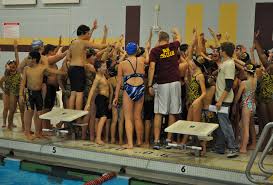 Phrases that I wrote about atmosphere during my brainstorm were; “Psychological practice”, Atmosphere where starts and turns are valued, “Inclusive atmosphere was established for the team.
Phrases that I wrote about atmosphere during my brainstorm were; “Psychological practice”, Atmosphere where starts and turns are valued, “Inclusive atmosphere was established for the team.
The main goals for a positive team atmosphere that I want to establish and maintdain throughout the season are:
- “Psychological training” where we practice “big meet moments” and also give the kids strategies to calm themselves down.
- Athletes understanding why we care about starts and turns. Athletes are advocates amongst their teammates for great starts and turns.
- Athletes feel that they can be themselves without being ridiculed.
Measurement:
I read somewhere that if “it” isn’t measured “it” isn’t important. As a science teacher I wholeheartedly agree! Truthfully, this is a weakness in my planning. This season I hope to set up better systems so that I can measure the athlete’s growth.
Phrases that I wrote about measurement during my brainstorm were; “ Goal times – Desired 25,50 and 100 splits, “first stroke of a race looks the same as the last stroke (Stroke rate & Distance)”, “Measure starts and turns progress”
The main goals that I have for measurement are:
- Measure splits that athletes are hitting. (Rested, Unrested, Desired)
- Measure stroke rate, and stroke count for 25 yard swims
- Measure time it takes athlete to get 15 M underwater from dive and push.
These themes will give me the “muscles” that I can lay over the “bones” of my weekly, and monthly training outline.
3rd: Plan
Now that we have the major themes that we want to focus on during the season, we need to organize them into a coherent training plan.
Begin with a calendar. Circle the date of the season’s final meet. Go through the rest of the season and fill in the other meets. (Usually 1 per month)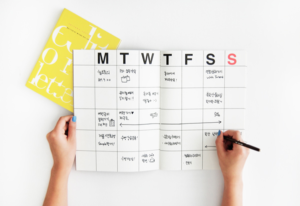
Once the meets are planned, I go back and begin filling in the overall “season themes”. Thinking of a season as an airplane taking off and landing at a different destination, I plan the last 2 weeks from the big meet as the “landing”. The majority of the season before that is the “cruising altitude” and the 3 weeks before that (beginning of the season) is the takeoff. I prefer to take off slow so as to avoid injury. A grounded plane is no good for everybody.
After the season themes are planned I go back again and fill out the “daily themes” into a weekly training cycle. I enjoy weekly cycles because it keeps me organized and reassures me that we are working towards the end season goal. This doesn’t mean that the weekly cycle can’t be changed. I change the cycle where I see fit, or throw it out completely if it’s not working.
My group does not have morning practices so i will not include those in my practice plan.
Monday: Generals warm-up and threshold training. Measurement.
- Getting back into the weekly swing of things. Body is a bit rested so the athletes can handle something challenging. Use it as a “report card”.
- For measurement I would try to cycle through training pace, underwater, and stroke length measurement, focusing on 1 per week.. This would allow the athletes 2 weeks before the next cycle of measurements on the same discipline.
Tuesday: Kick to swim. Stroke work.
- I Believe that kicking can give my athletes increased aerobic capacity and help them with their strokes long term. I spend a couple days a week on a good kick set.
- We would change the stroke work every week depending on the athletes needs. At the beginning of the year I would probably spend one session on long axis strokes (freestyle and backstroke), and short axis strokes (fly and breast) on the next session.
Wednesday: Race Pace. Starts & Turns. Measurement
- I like going fast on Wednesdays. This gives the kids a big enough break before Saturday so that we can really push it.
- I was thinking about putting the Starts and turns on Friday as a “recovery” exercise. However that is how the athletes would ultimately view it. Athletes are also not very receptive to a lot of talking on Fridays since they are excited for the weekend and just had a week of school
- Spending time having the athletes Peer coaching turns is well worth the investment. Peer coaching makes the kids accountable to each other and helps them see turns from a different side of the coin.
Thursday: Kick to swim. Stroke work
- Same idea as Tuesday but we would change up focus on strokes. Perhaps throw an IM set in there.
Friday: Descend sets to hold threshold. Fun
- The athletes are tired mentally and physically on Fridays after a hard week of training. I use descend sets to “trick them to go fast”.
- After the initial descend, I would ask the athletes to hold that fast pace for 2-3 reps of the desired distance.
- Fun could be incorporated as stations, partner pulling, relays, get out swims, games or plain old getting out early.
- Fun could also be a game that the coaches (or kids) design to help the athletes build better relationships
Saturday: The kitchen sink
- Threshold into sprint
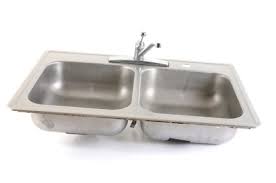
- Remind athletes of turns
- Race pace
- Train til’ failure type sets.
Sunday: Rest
Note: On some race pace days I will cut the practice short to give the athletes 1 opportunity to swim their goal time. The idea here is to put pressure on the athlete in a low stakes environment. They get one shot at their time. Miss the opportunity and it may be weeks before the chance comes up again.
I hope that you can follow my outline of how I started to plan my 2016 short course season. If you have any questions please feel free to comment or email me at coachc@swimcoach.org.
Let me know in the comments below how you want your athletes to perform during the last meet of the season. How are you going to get them there?
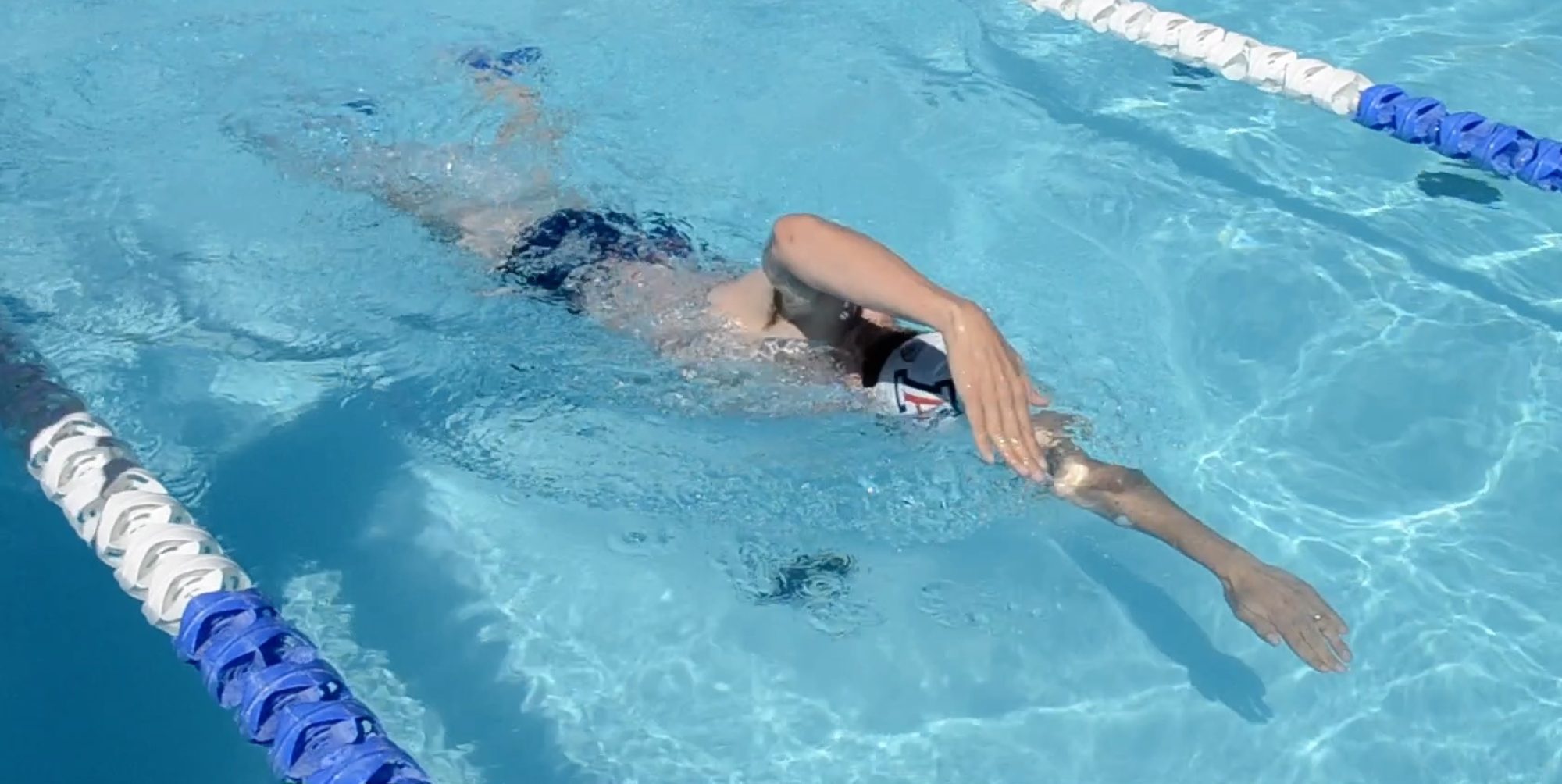
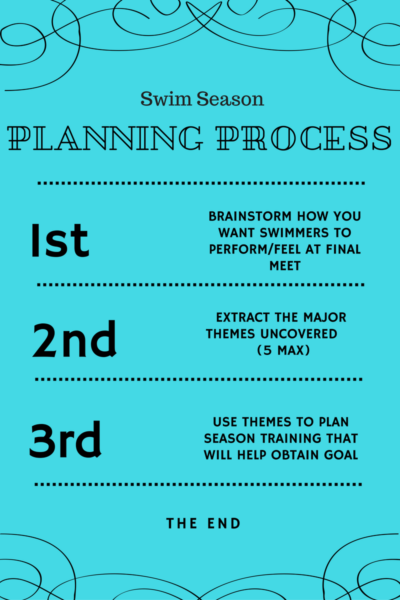
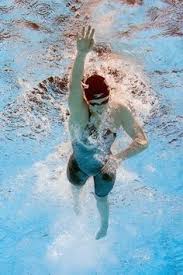

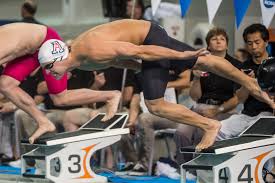
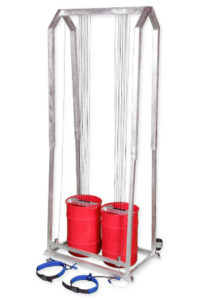 e swimmer (who is wearing the belt around their waist). Tandy’s bucket was overflowing with water.
e swimmer (who is wearing the belt around their waist). Tandy’s bucket was overflowing with water.